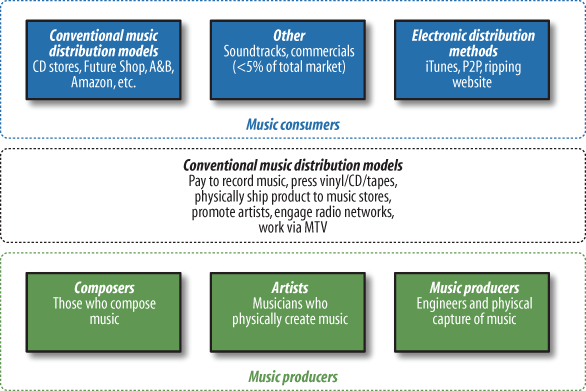MP3.com and Napster
By the time the first Web 2.0 conversations started, the first incarnations of MP3.com and Napster were both effectively history. Neither of them was particularly well liked by the music industry, for reasons that feed into Web 2.0 but aren’t critical to the comparison between them. Their business stories share a common thread of major shift in the way music is distributed, but the way they went about actually transferring music files was very different, mirroring the Akamai/BitTorrent story in many ways.
Applicable Web 2.0 Patterns
Some of the technical patterns illustrated by this comparison are:
Service-Oriented Architecture
Software as a Service
Participation-Collaboration
The Synchronized Web
Collaborative Tagging
Declarative Living and Tag Gardening
Persistent Rights Management
You can find more information on these patterns in Chapter 7.
Shifting Patterns and Costs of Music Distribution
The music industry has historically been composed of three main groups: those who create music (writing, recording, or producing it); those who consume it; and those who are part of the conventional recording and music distribution industry, who sit in the middle (see Figure 3-8).

Figure 3-8. Conventional music industry model
Historically, music publishing and distribution has been done via physical media, from 78s to CDs. If you abstract the pattern of this entire process, you can easily ...
Get Web 2.0 Architectures now with the O’Reilly learning platform.
O’Reilly members experience books, live events, courses curated by job role, and more from O’Reilly and nearly 200 top publishers.

